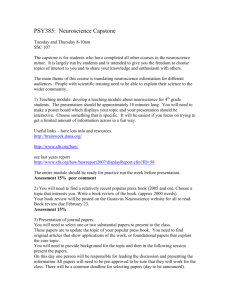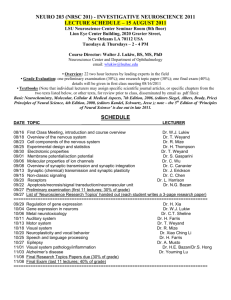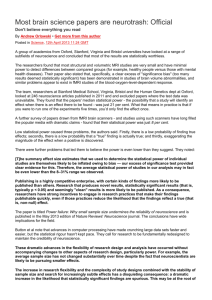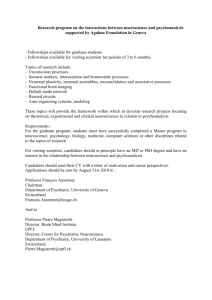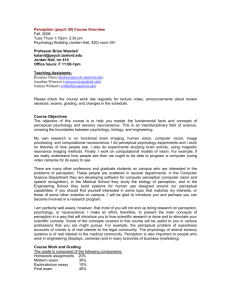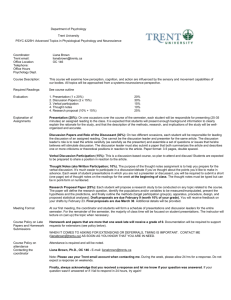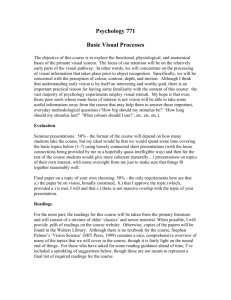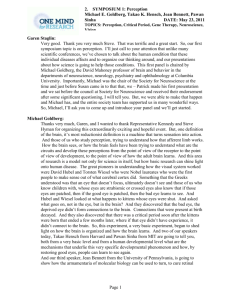PSY305ReadingListlec..
advertisement
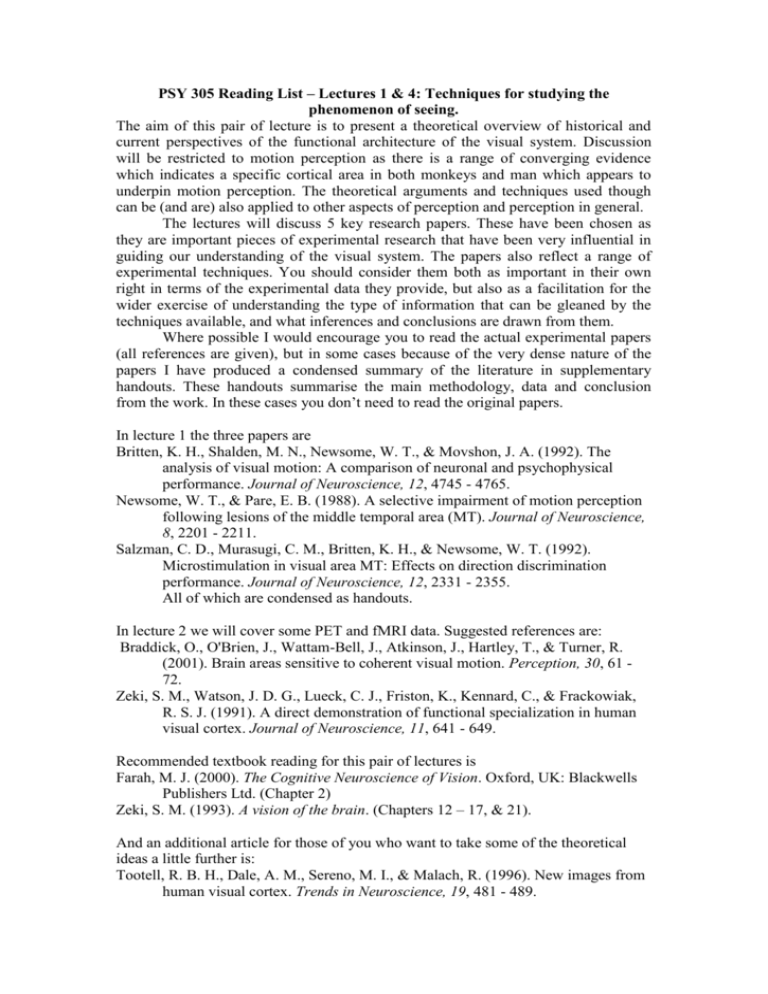
PSY 305 Reading List – Lectures 1 & 4: Techniques for studying the phenomenon of seeing. The aim of this pair of lecture is to present a theoretical overview of historical and current perspectives of the functional architecture of the visual system. Discussion will be restricted to motion perception as there is a range of converging evidence which indicates a specific cortical area in both monkeys and man which appears to underpin motion perception. The theoretical arguments and techniques used though can be (and are) also applied to other aspects of perception and perception in general. The lectures will discuss 5 key research papers. These have been chosen as they are important pieces of experimental research that have been very influential in guiding our understanding of the visual system. The papers also reflect a range of experimental techniques. You should consider them both as important in their own right in terms of the experimental data they provide, but also as a facilitation for the wider exercise of understanding the type of information that can be gleaned by the techniques available, and what inferences and conclusions are drawn from them. Where possible I would encourage you to read the actual experimental papers (all references are given), but in some cases because of the very dense nature of the papers I have produced a condensed summary of the literature in supplementary handouts. These handouts summarise the main methodology, data and conclusion from the work. In these cases you don’t need to read the original papers. In lecture 1 the three papers are Britten, K. H., Shalden, M. N., Newsome, W. T., & Movshon, J. A. (1992). The analysis of visual motion: A comparison of neuronal and psychophysical performance. Journal of Neuroscience, 12, 4745 - 4765. Newsome, W. T., & Pare, E. B. (1988). A selective impairment of motion perception following lesions of the middle temporal area (MT). Journal of Neuroscience, 8, 2201 - 2211. Salzman, C. D., Murasugi, C. M., Britten, K. H., & Newsome, W. T. (1992). Microstimulation in visual area MT: Effects on direction discrimination performance. Journal of Neuroscience, 12, 2331 - 2355. All of which are condensed as handouts. In lecture 2 we will cover some PET and fMRI data. Suggested references are: Braddick, O., O'Brien, J., Wattam-Bell, J., Atkinson, J., Hartley, T., & Turner, R. (2001). Brain areas sensitive to coherent visual motion. Perception, 30, 61 72. Zeki, S. M., Watson, J. D. G., Lueck, C. J., Friston, K., Kennard, C., & Frackowiak, R. S. J. (1991). A direct demonstration of functional specialization in human visual cortex. Journal of Neuroscience, 11, 641 - 649. Recommended textbook reading for this pair of lectures is Farah, M. J. (2000). The Cognitive Neuroscience of Vision. Oxford, UK: Blackwells Publishers Ltd. (Chapter 2) Zeki, S. M. (1993). A vision of the brain. (Chapters 12 – 17, & 21). And an additional article for those of you who want to take some of the theoretical ideas a little further is: Tootell, R. B. H., Dale, A. M., Sereno, M. I., & Malach, R. (1996). New images from human visual cortex. Trends in Neuroscience, 19, 481 - 489.


